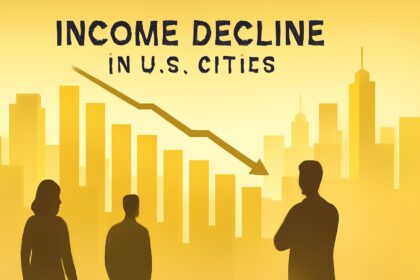Markets Anticipate Fed Rate Cut with a Minority Betting on a Half-Point Reduction
Traders on Wall Street are largely pricing in a 25 basis point reduction in the Federal Reserve’s key interest rate at the upcoming September 17 Federal Open Market Committee (FOMC) meeting. According to the CME Group’s FedWatch tool, the odds of this quarter-point cut stood at approximately 88% as of Monday afternoon.
Despite the strong consensus, a notable minority—about 12%—is holding out for a more substantial 50 basis point cut, echoing the Fed’s last September move in 2024. Market participants have effectively ruled out the possibility that the Fed will maintain current rates.
Labor Market Softness Fuels Easing Expectations
The shift toward expectations of monetary easing accelerated following the August jobs report, which revealed a modest increase of just 22,000 nonfarm payrolls and a rise in the unemployment rate to 4.3%, its highest point in nearly four years. This weak labor market data has strengthened the argument for the Fed to resume cutting rates.
Citigroup economist Andrew Hollenhorst noted that the report “will help drive consensus across the committee that not only should rate cuts resume this month, but that further cuts will likely be appropriate in coming months.” However, he cautioned that while some members might support a larger move, the majority are unlikely to approve a half-point reduction. Governors Michelle Bowman and Christopher Waller, along with Stephen Miran (pending Senate confirmation), could be among those favoring a bigger cut.
Inflation Data Remains a Critical Factor
Fed officials face a delicate balancing act with inflation still above the 2% target and labor market indicators softening. Upcoming inflation data on producer and consumer prices, expected later this week, will be pivotal. Economists surveyed by Dow Jones forecast headline inflation to rise to 2.9%, with core inflation steady at 3.1%. Should inflation surprise to the upside, it could complicate the Fed’s decision-making and potentially reinforce the case for only a quarter-point cut.
Apollo economist Torsten Slok highlighted this tension, stating, “The Fed is in a ticklish spot now with inflation still above target and the soft jobs picture, putting the central bank’s dual goals of stable prices and full employment in conflict.” Slok anticipates the Fed will maintain an easing bias but will increasingly focus on inflation expectations rather than current inflation data.
Outlook for Future Fed Actions
Current market expectations suggest the Fed will cut rates next week, pause in October, and resume easing in December. Citigroup forecasts a series of rate cuts over the next five meetings, emphasizing the Fed’s increasing focus on labor market weakness amid persistent inflation pressures.
Nomura economist David Seif described the August employment report as “solidifying the case for the Fed to deliver a series of insurance cuts at upcoming meetings,” while noting that elevated inflation risks mean more aggressive easing would require further labor market deterioration or tighter financial conditions.
FinOracleAI — Market View
The Fed’s imminent decision is poised to have a positive short-term impact on markets as investors anticipate rate cuts that could support economic growth. The weak August payrolls and elevated unemployment underpin expectations for easing, though persistent inflation injects uncertainty into the Fed’s path. A half-point cut remains a low-probability event but would likely spur a stronger market rally if realized.
Key risks include inflation data surprises that could restrain aggressive easing and potential shifts in Fed communication. Market participants should closely monitor upcoming CPI and PPI figures and any signals from Fed officials about the balance between inflation control and labor market support.
Impact: positive













